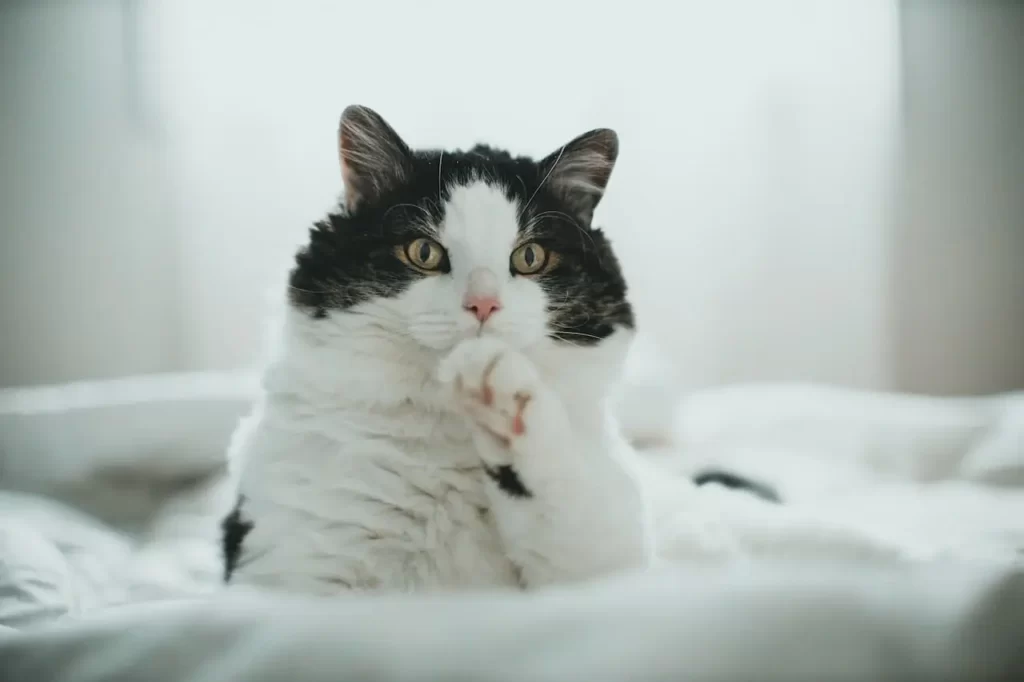Why Does My Cat Poop in the Sink?
Cats are known for their cleanliness and preference for using a litter box. However, some cat owners may face the peculiar issue of finding their feline friend choosing to poop in the sink instead.
While it can be frustrating and confusing, understanding the reasons behind this behavior is crucial for finding a solution.
In this blog, we will explore the possible causes of cats pooping in the sink and provide practical solutions to address the issue.
Read Also: Do Cats Have Orgasms?
Why Does My Cat Poop in the Sink?
Why Does My Cat Poop in the Sink? Your cat may poop in the sink instead of the litter box due to medical issues, litter box preferences, stress or anxiety, territory marking, or negative experiences associated with the litter box.
Why Cats Poop in the Sink: Causes and Solutions
Medical Factors
One of the first things to consider when your cat starts exhibiting unusual bathroom behavior is their health. Underlying medical conditions can affect a cat’s elimination habits.
Conditions such as urinary tract infections, digestive disorders, or intestinal parasites may cause discomfort, leading them to avoid the litter box.
It is essential to consult a veterinarian who can examine your cat and rule out any potential medical issues.
2. Litter Box Problems
A properly maintained litter box is vital for a cat’s comfort and hygiene. If the litter box is dirty, too small, or located in an inconvenient or noisy area, your cat may seek alternative places to eliminate it, such as the sink.
Cats prefer a clean litter box, so it’s crucial to scoop it daily and replace the litter regularly. Additionally, ensure that the litter box is large enough for your cat to move comfortably and placed in a quiet and accessible location.
Read Also: How to Stop Cat Sleeping on Bed?
3. Stress and Anxiety
Cats are sensitive creatures and can easily become stressed or anxious due to changes in their environment or routine.
Factors such as the addition of new pets, visitors, or changes in their daily routine can trigger stress and result in inappropriate elimination. To help your cat feel more at ease, create a calm and safe environment.
Provide hiding spots, vertical spaces, and engage in interactive play to reduce anxiety. If necessary, consult with a veterinarian or a professional animal behaviorist to develop a tailored plan to alleviate your cat’s stress.
4. Texture and Surface Preference
In some cases, cats may develop a preference for certain textures or surfaces to eliminate. The cool, smooth surface of a sink can be appealing to them.
To discourage sink pooping, make the sink inaccessible or unattractive. You can try placing aluminum foil or double-sided tape in the sink, as cats generally dislike these textures.
Alternatively, offer alternative litter box options with different surfaces, such as a litter box with fine sand or a different type of litter.
Read Also: Why Do Cats’ Tails Fall Off?

How to Stop Cat From Pooping in the Sink
Preventing your cat from pooping in the sink requires a proactive approach and addressing the underlying reasons for its behavior. Here are some prevention tips to help stop your cat from using the sink as a bathroom:
1. Keep the litter box clean
Cats are meticulous creatures and prefer a clean litter box. Scoop the litter box at least once a day and change the litter regularly. This helps ensure that your cat has a pleasant and inviting place to do their business.
2. Provide an appropriate litter box
Make sure the litter box is large enough for your cat to comfortably move around and dig. Avoid covered litter boxes as some cats may feel confined or trapped.
Additionally, consider having multiple litter boxes in different locations, especially if you have a multi-level home.
Read Also: Why Does My Cat Hate Me But Love Everyone Else?
3. Choose the right litter
Cats have individual preferences for litter types. Experiment with different textures and materials to find one that your cat prefers.
Some cats may prefer fine sand-like litter, while others may prefer clumping or non-clumping litter. Gradually transition to a new litter to give your cat time to adjust.
4. Ensure litter box accessibility
Place the litter box in a quiet, low-traffic area where your cat can access it easily. Avoid placing it near loud appliances, washing machines, or litter box covers that may make your cat feel vulnerable or trapped.
Read Also: Can cats eat sausage?
5. Clean up accidents promptly
If your cat has an accident in the sink, clean it thoroughly to remove any lingering odors. Use enzymatic cleaners specifically designed to eliminate pet odors and stains.
Avoid using ammonia-based cleaners, as the scent may attract your cat back to the sink.
6. Reduce stress and anxiety
Create a calm and secure environment for your cat. Provide hiding spots, vertical spaces, and interactive toys to keep them mentally stimulated and entertained.
Stick to a consistent routine to minimize stressors and provide a sense of stability.
7. Behavior modification techniques
Consider using deterrents to discourage your cat from accessing the sink. Place aluminum foil or double-sided tape in the sink, as cats generally dislike the texture.
Alternatively, cover the sink with a sturdy mesh or place citrus-scented cotton balls around the sink area, as cats tend to dislike these smells.
Read Also: How much hair does a cat shed in a day?
8. Seek professional help if needed
If your cat continues to exhibit sink pooping behavior despite your efforts, consult with a veterinarian or a professional animal behaviorist.
They can provide personalized guidance and develop a tailored plan to address the issue based on your cat’s specific needs.
Remember, patience and consistency are key when modifying your cat’s behavior. With time, proper preventive measures, and understanding, you can help redirect your cat to use the litter box as intended and prevent them from using the sink as a substitute.
Read Also: How Long Can a Cat Go Without Urinating?
Conclusion
While finding your cat pooping in the sink can be perplexing, it’s important to understand the underlying causes and implement appropriate solutions.
Remember to rule out any medical conditions, address litter box issues, and alleviate stress or anxiety.
By understanding your cat’s preferences and providing them with a suitable environment, you can help them develop positive litter box habits. If the issue persists, don’t hesitate to seek professional guidance.
With patience, consistency, and a proactive approach, you can encourage your cat to use the litter box as intended, leading to a happier and cleaner home for both you and your feline companion.

